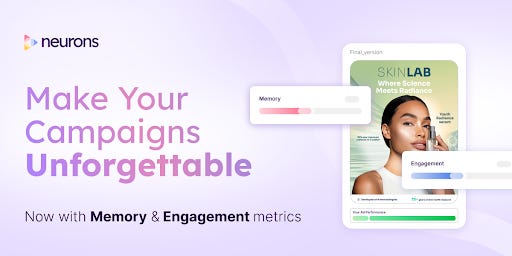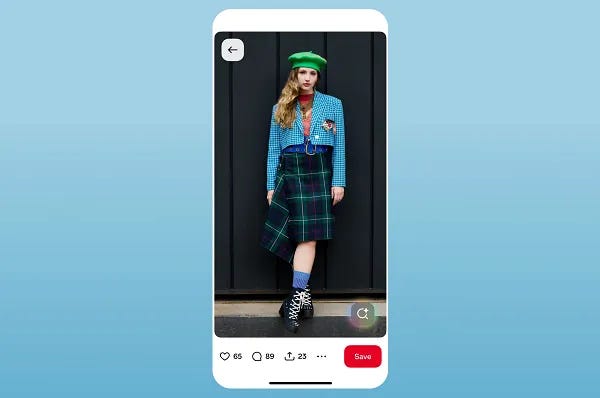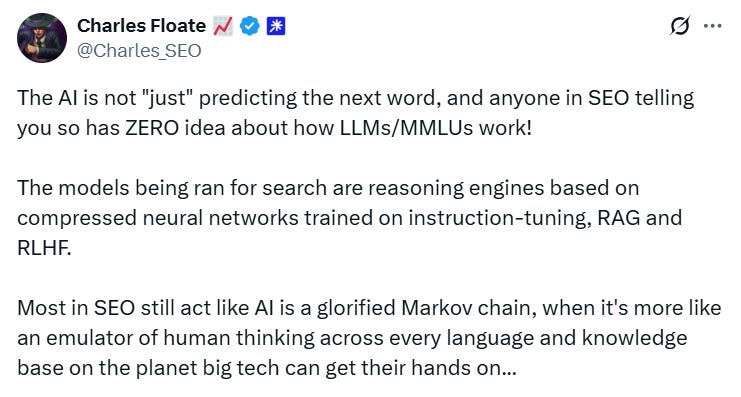The New Conversion Crisis
🧠 Attention Theft is failing your best ads before they even land on the website, Pinterest's New Visual Search Tips: Get Seen by the Right Shoppers, and more!
Howdy Readers 🥰
In this newsletter, you’ll find:
🧠 Attention Theft and the New Conversion Crisis: Why your best ads fail, and how to stop losing conversions before they start
📌 Pinterest's New Visual Search Tips: Get Seen by the Right Shoppers
🚀Tweet of the Day
If you’re new to Buyology then a hearty welcome to you, You’ve reached the right place alongside 50k+ amazing people, Before you forget, if someone forwarded this newsletter to you, don't forget to subscribe to our newsletter so you never miss out!
Together with Neurons
🧠 Your Ad Looks Great. But Will Anyone Remember It?
In a scroll-happy world, attention isn’t enough; retention is the new ROI.
Neurons now includes memory and engagement scoring, so you can predict not just if someone sees your ad, but if they’ll recall it days later.
Here’s how it works:
✅ Upload your creative (image or video)
✅ Neurons simulates real audience reactions based on years of neuroscience data
✅ You get instant metrics: Memory retention, emotional impact, and engagement breakdown
The result? Actionable feedback you can use to fix forgettable ads before they cost you money.
Creative teams using Neurons have seen up to 73% boosts in CTR and 20% lifts in brand recall.
Want your next campaign to leave a mark?
🧠 Attention Theft and the New Conversion Crisis: Why your best ads fail, and how to stop losing conversions before they start
There was a time when marketers obsessed over getting attention. Now, the smarter ones are realizing they need to protect it.
Because in today’s funnel environment, most users don’t drop off because they’re uninterested; they drop off because their attention was stolen. This is the new conversion crisis. And it’s happening long before your ad, copy, or CTA even gets a fair shot.
The Hidden Death Spiral
Let’s walk through what happens when a user clicks your ad:
The page takes 2–4 seconds to load on mobile.
A cookie banner appears before they see the product.
A cart flyout slides in.
An email popup shows up within another 3 seconds.
A discount bar wiggles at the top.
Instagram notifications or another app grabs their attention mid-load.
The result?
Bounce, not because the offer was weak, but because the user hit cognitive overload before the funnel even began.
This is attention theft. And it’s baked into most DTC tech stacks without anyone noticing.
Why Your Creative Isn’t the Problem
You keep testing new hooks, visuals, and formats. But creative isn’t the issue when the context collapses before the content can even load.
The best ad in the world can’t convert through 20+ scripts, auto-play product videos, 4MB image loads, and chaotic mobile layouts.
We’re not talking about pixel errors or bugs, we’re talking about experience sabotage.
What This Is Doing to ROAS
Let’s say you’re driving paid traffic at $80 CPM. You’re optimizing for clicks, but your site has:
3 seconds of load lag
2 seconds of pop-up delays
40% mobile session bounce rate within 5 seconds
You’re wasting paid traffic not because of an offer mismatch, but because the experience feels untrustworthy before users even engage. And it’s silently wrecking your return.
How Smart Teams Are Fixing It
The best DTC operators aren’t just testing ad creative anymore. They’re now:
Running “clean room” tests with all scripts disabled
Auditing first-click-to-first-scroll latency
Rebuilding mobile PDPs to load only above-the-fold assets
Moving popups to delay by scroll, not time
Prioritizing total experience speed as a KPI
Because when attention is the new currency, any leak, visual, technical, or structural, becomes a revenue loss.
The Future Belongs to Frictionless Funnels
We’re in an era where “fast and clean” feels premium. If your site feels like it’s trying too hard, users won’t even wait to find out what you’re selling.
Modern conversion doesn’t just happen through persuasion. It happens through the protection of time, attention, and sanity. The brands that understand this aren’t louder.
They’re just faster, simpler, and more respectful of the scroll.
📌 Pinterest's New Visual Search Tips: Get Seen by the Right Shoppers
Pinterest just dropped fresh advice on how brands can better align their product Pins with its evolving visual search tools, making it easier to meet users right at their moment of intent. As visual discovery becomes more precise, Pinterest recommends brands optimize their catalogs and creatives to sync with how people actually browse.
The Breakdown:
1. Keep Catalogs Fresh - Update your Pinterest catalog with detailed info like brand name, pricing, and sizing. This data helps Pinterest match your products to the right queries through its AI-driven visual engine.
2. Use Lifestyle Imagery at Scale - Lifestyle images improve search visibility by tapping into Pinterest’s aesthetic matching system. Tools like Performance+ can auto-generate creative backgrounds for your Pins to help scale this effort quickly.
3. Expand Reach With Visual Targeting - Performance+ targeting analyzes the visual style of your Pins and expands your reach to users engaging with similar aesthetics, no need for manual keyword targeting.
Visual-first shopping is Pinterest’s superpower, and now, with AI like Performance+, brands can act on that instantly, letting marketers tap into style-based discovery, reach new intent-rich audiences, and optimize Pins for the way people actually browse.
🗝️ Tweet of the Day
Advertise with Us
Wanna put out your message in front of over 50,000 best marketers and decision makers?
Checkout our Partner Kit here🤝
At Buyology, we care about our readers and want to provide the best possible experience. That's why we always look for ways to improve our content and connect with our audience. It would be amazing if you could hit us up with feedback about our content or absolutely anything, we are always up for a chat 🥰
Thanks for your support, We'll be back with more such content 🥳



